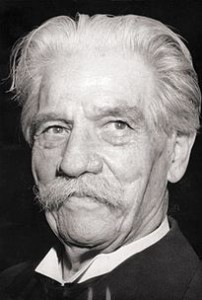Happy birthday to the Book Haven! We’re ten years old!
Saturday, November 30th, 2019We began on November 19, 2009. And we’ve been going ever since. For years we’ve anticipated this special tenth anniversary (alright, alright, we’re eleven days late; we’ve been busy).
What did we imagine? We had envisioned champers and brie and little pink cakes! We had hoped for international acclaim and cybercards and cyberroses … oh well, why bother? Instead: one solitary woman at a computer, cranking out books and articles (and even the occasional blogpost) faster than any reasonable person should.
However, the occasion of our tenth anniversary was not entirely unmarked. The Book Haven has made it’s debut appearance in The Smithsonian Magazine, with this paragraph in the current issue, on a subject we know startlingly little about. It generated a scholarly query last week in my inbox, so it’s good to know our July 11, 2018, post is getting some attention
The end result, according to a blog post by Stanford University’s Cynthia Haven, was a masterful collection of 1,299 gouaches, 340 transparent text overlays and a total of 32,000 words. One painting finds the artist cuddling in bed with her mother; another shows a seemingly endless parade of Nazis celebrating Adolf Hitler’s appointment as Germany’s chancellor while swastikas swirl above their heads.
Read more here.
What else has happened, since we last wrote about ourselves, five years ago, here? Some time ago, we hit a record high of 45,000 hits in a month. However, gone are the days when we used to wake up in the morning, pull the laptop out from under the bed, and compulsively check our numbers on Google Analytics. We have our following, and we get our bouquets and our punches … and our letters. Like this one a few days ago, from the U.K.: “I am just writing a very quick thank you for introducing Edna St Vincent Millay to me. I had been searching for Sara Teasdale and found a wonderful article written by you at The Book Haven. If it wasn’t for your article I wouldn’t have found and fallen in love with Edna.” We’re glad you did, sir!
This year alone: We’ve posted on the controversy surrounding the Stanford University Press here and here. After the death of the notable Johns Hopkins polymath and bibliophile Richard Macksey, we were quoted in The Washington Post and the Baltimore Sun and wrote about his passing here and here and here. We’ve forged a partnership with The Los Angeles Review of Books to create an Entitled Opinions channel, as well as a series of articles.
Books, books, books. We’ve written about many books. We wrote about our debut in Wall Street Journal, The New York Times, The Nation, plus reviews of Evolution of Desire: A Life of René Girard. (Too many to list – put it in the Book Haven search engine). Plus… we were named a 2018-19 National Endowment for the Humanities public scholar, the inaugural Milton Cottage resident, and oohhh, so much more.
The Book Haven broke the national news of President Trump‘s plans to scuttle the National Endowment for the Humanities and the National Endowment for the Arts – but other media outlets were close on our heels. We memorialized fallen greats at Stanford, many of them friends: Dostoevsky scholar Joseph Frank and theater director and Brecht protégée Carl Weber, French intellectual Michel Serres and Milton Scholar Martin Evans, and of course, the French theorist René Girard. And, this month, another cherished friend, the French scholar Marilyn Yalom.
The Book Haven has taken you to Bergen, Sigtuna and Stockholm, Kraków and London, Warsaw, Paris, and Avignon, among other locales.
We’ve described how we brought about the acquisition of Russian Nobel poet Joseph Brodsky Papers at Stanford, and our debut on Russian TV … and later the acquisition of Russian poet Regina Derieva‘s papers.
We’re still here. So many excellent blogs and online journals have folded – Elegant Variation, House of Mirth, Bookslut – and journals, too, such as Quarterly Conversation and Smart Set. We’re still here, and looking forward, in six weeks time, in joining you for the brand new decade for all of us.
C’mon, December, we’re ready to take you on – to the end of the year and beyond. Our vision going forward is 2020.
Happy birthday to us! Long may we live!








 By contrast, genocidaire
By contrast, genocidaire 
 It’s April. Spring is in the air and blossoms are everywhere. What better time to think about
It’s April. Spring is in the air and blossoms are everywhere. What better time to think about  It was a trove indeed: included in the cellar were intelligence reports, interrogation reports, maps, and photographs relating to Adolf Hitler, the German military structure, national socialism, various aspects of German society during and immediately after World War II, various military campaigns of World War II (particularly preparation for the invasion of Normandy), denazification, and post-war reconstruction in Germany.
It was a trove indeed: included in the cellar were intelligence reports, interrogation reports, maps, and photographs relating to Adolf Hitler, the German military structure, national socialism, various aspects of German society during and immediately after World War II, various military campaigns of World War II (particularly preparation for the invasion of Normandy), denazification, and post-war reconstruction in Germany.









